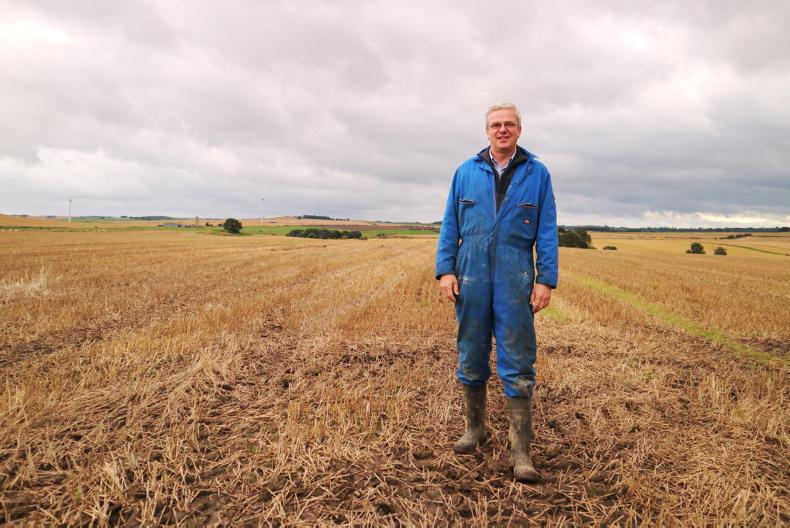The fire at the Quality Pork Limited’s abattoir in Brechin at the start of August highlighted the importance of the factory to the Scottish pig industry. Having recently invested £10m into the site, the chairman of QPL Roderic Bruce (pictured below) described the incident as a ‘disaster’. In fact, the fire closed the plant for at least nine weeks, with no official date set for it to re-open.
“Most of the damage was to the office block and staff quarters, but once we got into it a lot of the wiring to computers were damaged so that’s going to take a bit of time,” Bruce told the Farmers Journal. “The smoke damage in the plant itself has been very difficult to clean up. We’re getting portacabins in to replace the offices and staff quarter. There was an ammonia [refrigeration] plant that was also damaged.”
In terms of stock on site, ‘not much’ was lost and no live animals were on site at the time.
“I believe that we are well-insured, so hopefully that’s going to cover everything.”
He expressed his gratefulness to the industry for such a swift reaction to the fire, ensuring that alternative abattoirs were made accessible to Scottish pig producers within days of the fire.
“As far as I’m aware there has been no backlog on farm. The marketing co-op Scottish pig producers, Scotlean and the hauliers and Tulip have done a super job keeping pigs moving,” Bruce said, as he was preparing to tag his own pigs being sent to Northern Ireland. “Part of our label is that we are inspected by the SSPCA, so they and QMS had to inspect the plants [in England] to see that they met Scottish standards.”
The Aberdeenshire pig and arable farmer has been chairman for the last four years. The QPL board is made up of two Scotlean representatives, the chair and vice chair of Scottish Pig Producers and one representative from Danish-owned company Tulip which has the contract to operate the Brechin plant.
“One of the organisations we’ve got is SAOS, they give us a lot of help. There was quite a big negotiation between ourselves, the banks and Tulip to make Brechin happen the way it did [when the abattoir was purchased from the Jess family]. I don’t know how we would have done it without SAOS. If they weren’t there who would we get and who would pay for it?”
The idea behind having a farmer-owned pig plant in Scotland was to ensure that the Scottish market could be supplied with pigmeat produced in this country.
“If we’ve learnt anything in the last few weeks it’s that Brechin is really important to the Scottish pig industry. Pig prices, apart from a few dips, have been good ever since the banking crisis. The pound has devalued, pushing up the price of imports. That, combined with a lack of pigs, and quite a strong processing industry in the UK has led to reasonably good prices.”
With a turnover of 5,000 pigs per week at Brechin and capacity for more once it re-opens, there is scope for growth in the Scottish pig industry.
“We’ve just agreed to spend another £1.5m on water treatment which we have to do before we can increase production. When that comes through we are looking for more pigs.”
So where is the future of the industry? Bruce believes that pigs can offer young people an opportunity to get a start in farming.
“The pig industry has always been a way of young farmers entering,” he said. “It doesn’t involve the same amount of capital. On our board of Scottish pig producers, we’ve more farmers there that have set themselves up from non-farm backgrounds than you would have in any other group of farmers. There is so little land available to rent and you can’t buy it. There are often either outdoor herds, which need very little money to start, or you could rent an old unit.”
Similar to the majority of Scottish pig farmers, Bruce produces his own grain for pig feed as well as buying in some from neighbouring farms. He has 360 sows, which he describes as an average family farm.
“The majority of pig farmers would be in arable too. It’s quite a robust business model, takes out some of the ups and downs. Then you are using the slurry to feed the crops, utilising it probably better than we ever have been.”
Keeping everything local should reduce the carbon footprint of a pig farm, something Bruce believes consumers are becoming increasingly conscious of.
“Carbon footprint seems to be the most important thing to our customers now. The consumer relationship with bacon is good but the consumption of roast pork type dishes has fallen over the last number of years. However, I can see why people want to spend less time on meal preparation, I think we’ll just have to get used to that.”






 This is a subscriber-only article
This is a subscriber-only article







SHARING OPTIONS: